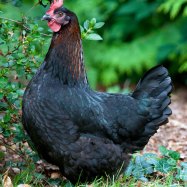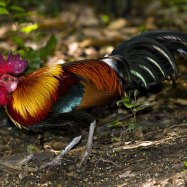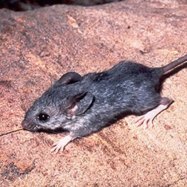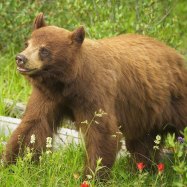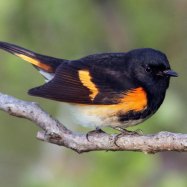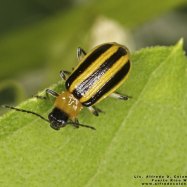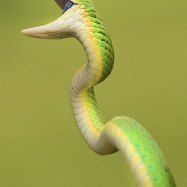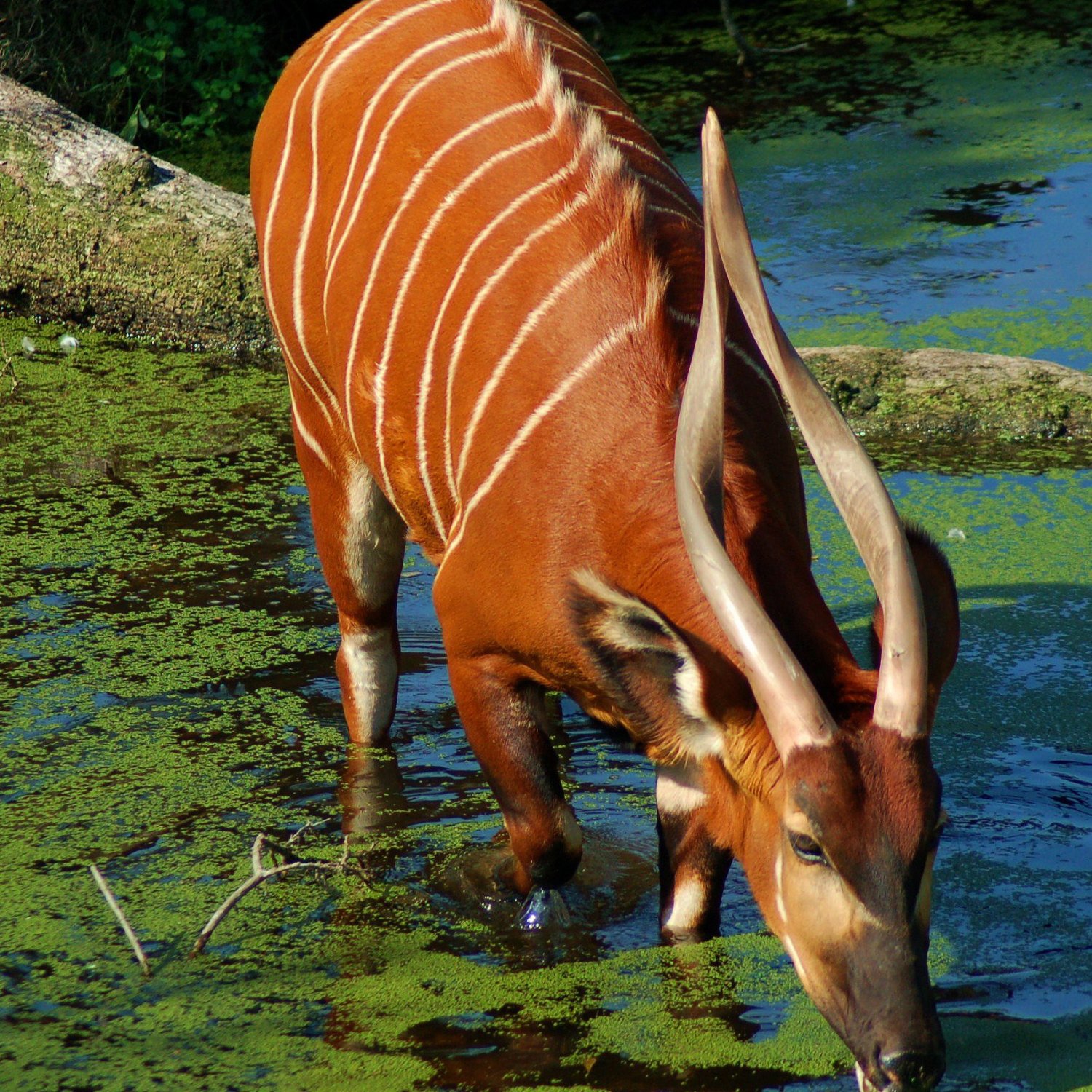
Bongo
1.7 to 2.8 meters
Bongos are large and robust antelopes found in Africa, belonging to the Bovidae family. These beautiful animals can grow up to 1.7 to 2.8 meters in length. Known for their distinctive chestnut and white stripes, they are herbivores and thrive in dense forests. Keep an eye out for these gorgeous creatures on your next African safari adventure. #Bongos #AfricanWildlife #Bovidae
Animal Details Summary:
Common Name: Bongo
Kingdom: Animalia
Habitat: Tropical and subtropical forests
The Majestic Bongo: The World's Largest Forest Antelope
The Bongo, with its scientific name Tragelaphus eurycerus, is a magnificent animal that inhabits the tropical and subtropical forests of Central and West Africa. It belongs to the kingdom Animalia, phylum Chordata, class Mammalia, order Artiodactyla, and family Bovidae, making it closely related to antelopes, goats, and cattle. This stunning mammal has captured the hearts of many with its beautiful reddish-brown coat, adorned with white stripes, and its large and robust body shape.But beyond its physical appearance, the Bongo possesses many unique qualities that make it a fascinating species Bongo. In this article, we will delve into the world of the Bongo, exploring its habitat, feeding habits, geographical distribution, and more. So, get ready to be captivated by the majestic Bongo, the world's largest forest antelope.
Habitat and Geographical Distribution
The Bongo is a master of its surroundings, perfectly adapted to its tropical and subtropical forest habitat. These forests are dense and filled with underbrush, providing the Bongo with ample cover and protection. These animals thrive in areas that receive high rainfall and are often found near water sources.The Bongo's geographical distribution is primarily in Central and West Africa, with its native range including countries such as the Democratic Republic of the Congo, Cameroon, and other neighboring countries. They are also present in some parts of South Sudan, Côte d'Ivoire, and Ghana. However, due to habitat loss and hunting, their population has decreased significantly, and they are now considered to be an endangered species.
Physical Appearance and Body Shape
One of the most striking features of the Bongo is its reddish-brown coat, which gives it a regal and majestic appearance Bass. This coloration allows them to blend in seamlessly with their forest environment, making them difficult to spot. But what is even more fascinating is that the Bongo's coat changes color with age. Young Bongos have a brighter and more vibrant coat, while older Bongos have a darker and duller coat.Their distinctive white stripes, which can be found on their face, chest, and legs, serve as a form of camouflage, breaking up their body outline and helping them blend in with the dappled light in the forest. These stripes also act as a form of communication between Bongos, especially during mating season.
The Bongo is a large and robust antelope, with adult males standing at an impressive height of 1.7 to 2.8 meters and weighing up to 400-500 kilograms. Females are slightly smaller, weighing around 250-300 kilograms. They have long and curved horns, which are present in both males and females, and serve as a form of defense against predators. Bongos can live up to 19 years in the wild and even longer in captivity.
Feeding Habits
The Bongo is a herbivorous animal, meaning their diet consists mainly of plants. They feed on a variety of leaves, fruits, and other vegetation found in their forest habitat. Bongos have a specialized stomach called a rumen, which allows them to digest tough and fibrous plants efficiently. This adaptation gives them a competitive advantage, as they can survive on a diet that is typically unavailable to other animals.Interestingly, Bongos have a unique way of obtaining minerals essential for their diet. They seek out natural salt licks found in the forest, which provides them with the necessary sodium and other minerals they require. These salt licks can be found in mineral-rich soils, and Bongos will often travel long distances to reach them.
Behavior and Social Structure
Bongos are primarily solitary animals, but they do form small groups consisting of females and offspring. Male Bongos, on the other hand, are more solitary and tend to roam alone. They are mostly active during the night, feeding and browsing in the cover of darkness, and resting during the day. But during the breeding season, males will become more active and vocal, using their horns to attract females and defend their territory.Interestingly, Bongos also have a unique way of marking their territory, extending their hair and rubbing it against trees. This behavior is known as "scent-wiping" and helps establish dominance, ownership of a territory, and attract potential mates.
The Threat of Habitat Loss and Hunting
As mentioned earlier, Bongos are classified as an endangered species, facing numerous threats to their survival. The most significant threat to their population is habitat loss due to deforestation and human encroachment. The destruction of their forest habitat has left Bongos with limited food sources and shelter, making it difficult for them to thrive.Another major threat to Bongos is hunting. These animals are hunted for their meat, which is considered a delicacy in some regions. They are also hunted for their striking coat, which is used to create clothing and decorative items. Additionally, Bongos are also frequently captured and kept as exotic pets, further contributing to their decline in the wild.
Conservation Efforts
Efforts are being made to conserve and protect the Bongo population. The Bongo Surveillance Project was established in 2011 to monitor and conserve the remaining Bongo population in Ghana. Other organizations, such as the Bongo Ecology Conservation Society, are also working towards raising awareness, conducting research, and implementing conservation measures for this endangered species.Moreover, sanctuaries and reserves have been set up to provide a safe and protected habitat for Bongos. These areas aim to provide a safe haven where Bongos can live and thrive without the danger of human interference. By working towards preserving their natural habitat and educating the public about the importance of this species, we can hopefully secure the future of the Bongo.
The Importance of Bongos in the Ecosystem
Bongos play a crucial role in the ecosystem of the forests they inhabit. As herbivores, they play a vital part in seed dispersal, helping to maintain the balance of plant life in their habitat. Their specialized diet also allows them to consume plants and other vegetation that may be harmful to other animals, making them an integral part of the forest's biodiversity.Moreover, Bongos are also a key prey species for predators such as leopards and hyenas. Their role as prey helps maintain the balance of predator-prey relationships in their ecosystem, ensuring the survival of both species.
In Conclusion
The Bongo, with its unique physical appearance, fascinating behavior, and crucial role in its ecosystem, is a truly remarkable animal. As we learn more about this magnificent species, we come to appreciate the importance of preserving and protecting its natural habitat. By raising awareness and taking action to conserve Bongos, we can ensure that these majestic animals continue to roam their forest homes for generations to come. Let us work towards securing a future where we can still witness the beauty and wonder of the world's largest forest antelope, the Bongo.

Bongo
Animal Details Bongo - Scientific Name: Tragelaphus eurycerus
- Category: Animals B
- Scientific Name: Tragelaphus eurycerus
- Common Name: Bongo
- Kingdom: Animalia
- Phylum: Chordata
- Class: Mammalia
- Order: Artiodactyla
- Family: Bovidae
- Habitat: Tropical and subtropical forests
- Feeding Method: Herbivorous
- Geographical Distribution: Central and West Africa
- Country of Origin: Democratic Republic of the Congo, Cameroon, and other countries
- Location: Africa
- Animal Coloration: Reddish-brown with white stripes
- Body Shape: Large and robust
- Length: 1.7 to 2.8 meters
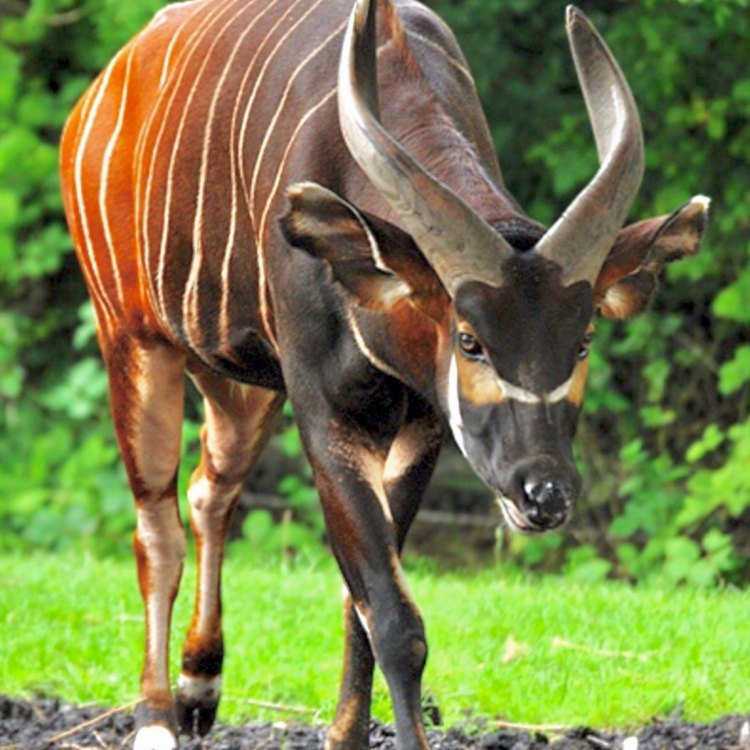
Bongo
- Adult Size: 150 to 220 kilograms
- Average Lifespan: 10 to 15 years
- Reproduction: Sexual
- Reproductive Behavior: Polygamous mating system
- Sound or Call: Bongos produce low-pitched vocalizations
- Migration Pattern: Non-migratory
- Social Groups: Solitary or small groups
- Behavior: Shy and elusive
- Threats: Habitat loss and hunting
- Conservation Status: Near Threatened
- Impact on Ecosystem: Bongos help disperse seeds and maintain forest ecosystems
- Human Use: Hunted for their meat and horns
- Distinctive Features: Spiraled horns and striking coat pattern
- Interesting Facts: Bongos are the largest forest-dwelling antelope species
- Predator: Leopards and humans
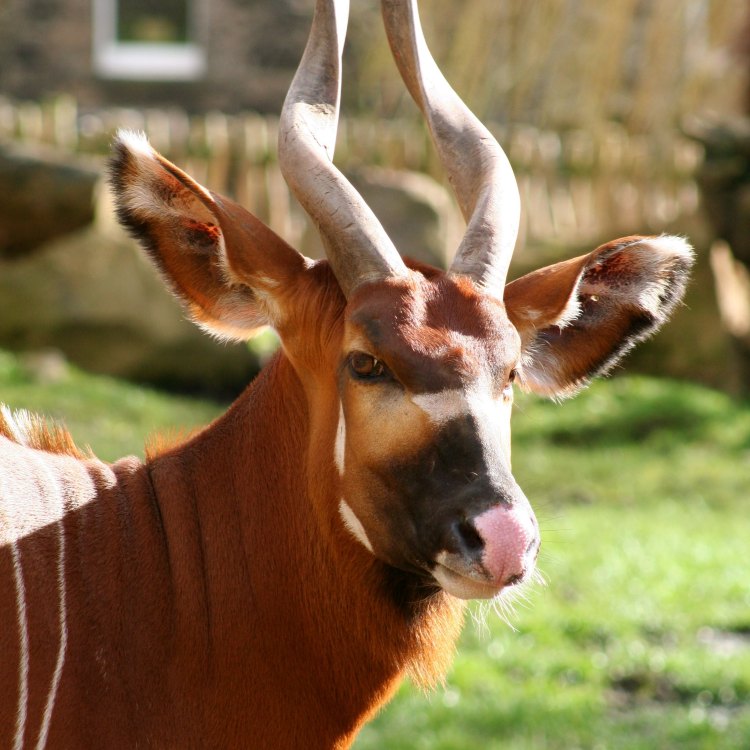
Tragelaphus eurycerus
The Mysterious and Elusive Bongo: A Closer Look at the Unique Features of Forest's Hidden Giant
Deep within the dense forests of Central and Western Africa, hidden from the prying eyes of humans, lies a majestic creature - the bongo. With its striking coat pattern, spiraled horns, and shy demeanor, the bongo is often dubbed as the "ghost of the forest". But despite its enigmatic nature, this elusive antelope species has caught the attention of wildlife enthusiasts and conservationists alike.In this article, we will take a closer look at the unique features of the bongo and delve into its behavior, threats, and impact on the ecosystem PeaceOfAnimals.Com. So, grab a cup of tea, put on your explorer's hat, and let's embark on a journey to discover the secrets of the bongo.
The Bongo's Physical Features and Size
The bongo (Tragelaphus eurycerus) is the largest forest-dwelling antelope species in the world, with males weighing between 150 to 220 kilograms and females weighing around 150 kilograms. They stand at an impressive height of 1.5 to 1.8 meters at the shoulder, making them one of the tallest and heaviest antelopes.One of the most distinctive features of the bongo is its large, spiraled horns, which can reach up to 100 centimeters in length. These horns are used for defense against predators and for sparring during mating season. Additionally, their reddish-brown coat is accented with white stripes and spots, providing them with excellent camouflage in the dense forest undergrowth.
Lifespan and Reproduction
Bongos have an average lifespan of 10 to 15 years in the wild Bonefish. However, in captivity, they can live up to 19 years. They reach sexual maturity at around 3 years of age, and their reproductive behavior is polygamous, meaning a male will mate with multiple females.During the breeding season, which occurs from July to November, male bongos will compete for females by engaging in fierce battles with their horns. After a gestation period of 9 months, females give birth to a single calf. The mother will hide her calf in dense vegetation for the first few weeks to protect it from predators. The calf will stay with its mother until it reaches maturity and can fend for itself.
Sounds and Migration Pattern
Bongos are non-migratory animals, meaning they do not undertake long-distance seasonal journeys like some other antelope species. Instead, they have a relatively small home range within the forest, which they defend fiercely. These elusive creatures are mostly solitary or live in small groups consisting of females and their offspring.One of the most intriguing aspects of the bongo is its call. Unlike other antelopes, which produce high-pitched sounds, bongos are known for their low-pitched vocalizations. These vocalizations are often used for communication between individuals or to warn others of potential danger.
Behavior - The Shy and Elusive Creatures of the Forest
As mentioned earlier, bongos are shy and elusive creatures, preferring to stay hidden in the dense forests rather than venturing out into open spaces. They are primarily active at dawn and dusk, with rest periods during the hottest hours of the day. This behavior helps them avoid predators, which include leopards and humans.Apart from this, bongos are also known for their secretive behavior, which makes them challenging to study in their natural habitat. It is estimated that only about 75,000 bongos are left in the wild, making them a near-threatened species according to the International Union for Conservation of Nature (IUCN) Red List.
Threats to the Bongo's Existence
The biggest threat to the bongo's existence is habitat loss. With vast areas of forests being cleared for agriculture, logging, and human settlements, the bongos' home is shrinking at an alarming rate. This loss of habitat also results in increased human-bongo encounters, which can lead to conflict.Another threat to the bongo is hunting. The bongo's striking horns and meat make them a valuable target for hunters, who often kill them for their trophies or to sell their body parts on the black market. Their elusive nature also makes them an easy target for poachers.
The Importance of Bongos in Maintaining Forest Ecosystems
Apart from their aesthetically pleasing characteristics, bongos play a crucial role in maintaining the balance of their forest ecosystem. As forest-dwelling animals, bongos help disperse seeds and nutrients by traveling through the dense vegetation. This action helps in the regeneration of plants and maintains the health of the forest ecosystem.Bongos also act as prey to predators, thereby keeping their numbers in check and helping in the natural selection process. By doing so, they contribute to the overall health and resilience of the forest.
Human Use - Hunting for Meat and Horns
Despite being a protected species, bongos are still hunted for their meat and horns. In some regions, bongo meat is considered a delicacy and is in high demand. Their horns are also prized for their medicinal properties and are used in traditional medicines. This illegal hunting, along with habitat loss, has led to a significant decline in the bongo population.In Conclusion
The bongo is a remarkable creature that deserves to be celebrated and protected. Its unique physical features, elusive behavior, and important role in the forest ecosystem make it a vital part of our natural world.But with their shrinking habitat and constant threat of hunting, the future of bongos looks uncertain. It is crucial for us to take immediate action to conserve these magnificent animals, whether it be through implementing strict anti-poaching laws or preserving their natural habitat.
The bongo may be called the "ghost of the forest", but we must not let it disappear into the shadows. Instead, let us come together to protect and appreciate the beauty and importance of this mysterious and elusive giant.
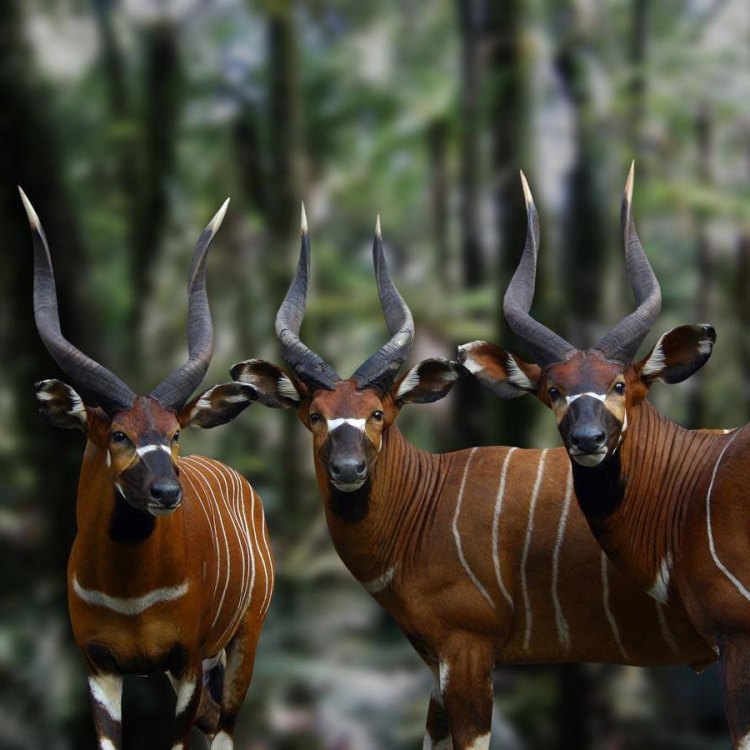
The Majestic Bongo: The World's Largest Forest Antelope
Disclaimer: The content provided is for informational purposes only. We cannot guarantee the accuracy of the information on this page 100%. All information provided here may change without prior notice.



